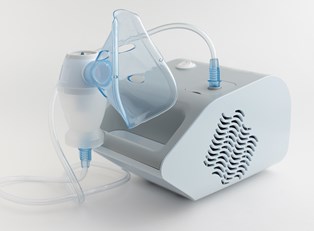When you think of inhalers, your next thought may be asthma, but patients with other respiratory conditions use them too. Be it a chronic disease or an acute respiratory infection, inhalers can benefit many types of patients who have difficulty breathing or clearing mucous from their chest. Respiratory diseases are usually managed by a pulmonologist, a physician who specializes in diseases of the respiratory system.
Rescue vs. Preventive Medications
Patients who use inhalers usually take two types of medications with them: rescue and preventative. Rescue inhalers contain short-acting drugs that work to open up the lungs and airways, making breathing easier, if not possible. Preventative inhalers take longer to work, so they are not to be depended upon in emergency situations, which are called exacerbations. Preventative inhalers do, however, help to keep exacerbations from occurring by reducing inflammation in the airways and lungs, and for this reason, they should be taken on a regular basis—even when symptoms are not apparent.
Humans generally have about six minutes before they die from oxygen deprivation. For this reason, any condition that impairs our ability to inhale oxygen and exhale carbon dioxide can be life-threatening. Inhaled medications can help maintain the integrity of the airways. Below are a few common respiratory conditions that require the use of inhalers:
Asthma
The poster child for conditions that require inhalers, asthma is a chronic respiratory disease that causes the airways to constrict and swell, restricting airflow in and out of the lungs. Asthma symptoms include shortness of breath, wheezing, and coughing.
Chronic Obstructive Pulmonary Disease (COPD)
There are two main types of COPD: emphysema and chronic bronchitis. These chronic respiratory diseases may result in shortness of breath, wheezing, and tightness in the chest. These and many other symptoms are mainly caused by inflammation in the smaller airways of the lungs and excessive mucous production that plug the smaller airways in the lungs.
Cystic Fibrosis
Sometimes too much phlegm is a problem as seen with cystic fibrosis. This pulmonary disease causes excessive amounts of thick, sticky mucous to accumulate in the airways. This mucous can decrease the diameter of the airways, making a smaller channel through which breathing takes place.
Reactive Airways Disease
Airways can be overly irritable. When agitated, they constrict and spasm. This is called a bronchospasm. When the airways are reactive, coughing can be a problem. The more coughing occurs, the more constriction occurs and the smaller airways become.
Additionally, patients with a respiratory infection such as pneumonia or those recovering from certain surgeries might use inhalers too.




